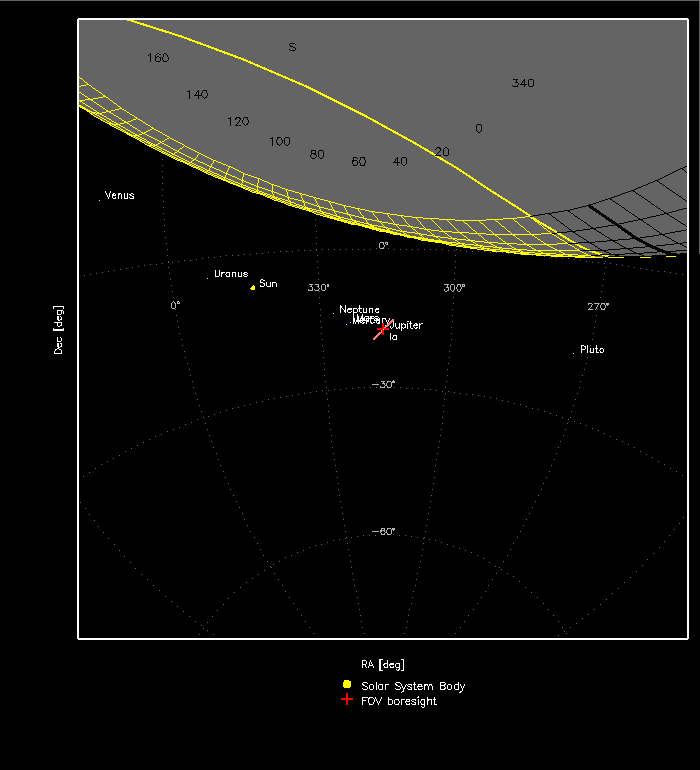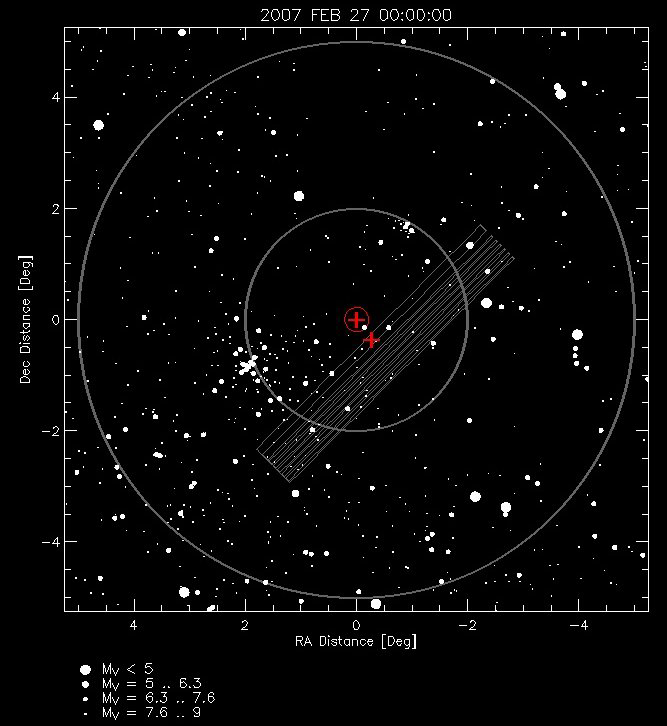Screenshots
-

Inbound observations of Charon, using correct I/F photometric calculations. LORRI FOV shown in red.
-

Martian system with Phobos and Deimos orbits shown, from orbit, using Spherical Projection. Lit face of Mars is to left.
-

Scan across Pluto (including downtrack error) using LEISA. Created with Footprints mode.
-

Scan across Pluto near C/A. MVIC is aligned with Pluto orbit normal (grey oval, and blue + signs), using Roll Angle = 0 deg from Orbit Normal. Shaded black-yellow line indicates Pluto terminator.
-

Pluto system two days before C/A. Blue/grey bars indicate orbit-normal planes for each body, displayed using Downtrack Error = 1000 seconds. This error is far larger than expected; we use it here just as a way to visualize the orbit-normal planes.
MVIC scan axis is aligned with Pluto orbit normal.
-

Crescent Moon as seen from Earth.
Cool trick: to see the Moon (or any object) as it is right now, just leave the Start Time entry blank, and GV will use the current actual time.
-

Composition map of Pluto at C/A; Anti-Charon longitude and terminator are marked. Set Surface Style = Composition.
-

Search for Juno-Alice stellar occultations at Jupiter. Jovian ring is marked, as is the terminator. Stars are from the HD catalog, with IDs, spectral types, and magnitudes marked. Because Alice is a UV instrument, only UV-bright stars are marked, by searching for 'OB' in the Stellar Type Filter.
-

Observations of the ecliptic coming into view with LRO-Alice orbit around the Moon. Terminator is marked. Moon is properly projected as it appears from low orbit.
-

Asteroid Lutetia plotted using its 3D shape, defined in a SPICE DSK (digital shape kernel).
-

Planning Callisto observations with LEISA near Jupiter C/A.
-

Planning Pluto solar occultation with ALICE, soon after C/A. Two timesteps show Pluto position just before and just after occultation.
-

Planning a LORRI calibration observation using stars from HD catalog.
-

Planning an MVIC scan across the M6/M7 star field.
-

Observation of the motion of Saturn across the sky, using multiple timesteps. Note the label that pops up when the cursor is on Saturn.